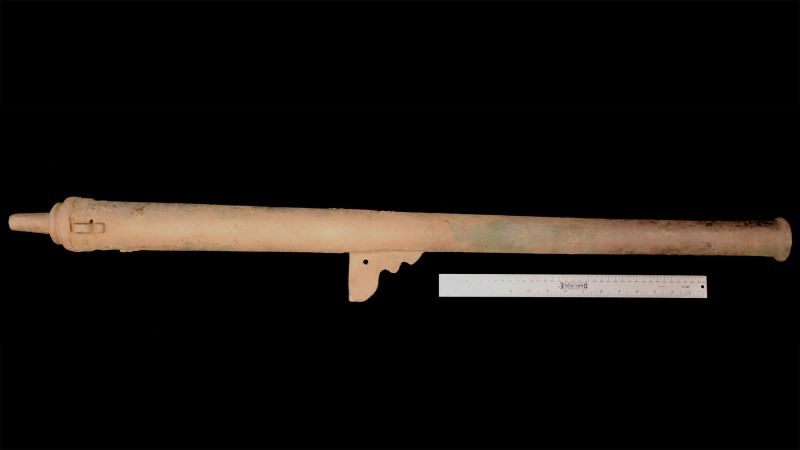Archaeologists in Arizona have made a groundbreaking discovery—two bronze cannons believed to be the oldest firearms ever unearthed in the continental United States. These significant historical artifacts were abandoned by a Spanish expeditionary force during an attack by Native Americans. The discovery not only adds a new layer to our understanding of colonial conflicts but also redefines the dynamics between Native American groups and European colonizers during that period.
The cannons, measuring an impressive 42 inches in length (or 107 centimeters), are commonly referred to as wall guns. Their discovery was made by independent researcher Deni Seymour, who identified them as the first firearms recovered from the infamous expedition led by Francisco Vázquez de Coronado. This expedition, which took place between 1539 and 1542, traveled north from modern-day Mexico into the American Southwest. The historical significance of these findings lies in their connection to this early European endeavor in the New World.
In a recent publication in the International Journal of Historical Archaeology, Seymour elaborated on this important find. She discussed how the first cannon was uncovered in 2020 within the ruins of a stone and adobe structure, part of a small settlement erected by the Spanish. This site, abandoned after a major battle in 1541, is crucial for understanding how this conflict unfolded. Previous discoveries, including associated artifacts and remnants such as charcoal and pottery, have helped archaeologists to conclusively link the location, referred to as San Geronimo III, to Coronado’s expedition.
The implications of this discovery are substantial. According to Seymour, these cannons symbolize a significant moment in history—the earliest successful uprising of Native Americans against European invaders on what would become U.S. soil. Notably, the Spanish did not return to the area for nearly 150 years, retreating to territories closer to present-day Mexico, which speaks volumes about the effectiveness of the Native American resistance during that time.
Despite the cannons’ formidable potential as weapons, Seymour notes that they would have been slow to load and fire. This suggests that the occupants of the structure were taken by surprise during the attack, as investigations confirmed that the first cannon had not been discharged. The implication here is stark: the defenders were likely overwhelmed and engaged in close-quarters combat, unable to prepare their artillery in time to respond to the sudden onslaught.
Seymour speculates that those inside the structure might have found themselves fighting for their lives from their bedsides, which ultimately rendered the cannons ineffective in the face of an unexpected assault. In stark contrast, the second cannon, which was discovered directly on the battlefield, showed evidence of having been fired, indicating a more organized defense.
The discovery of these cannons also sheds light on the O’odham Native Americans, who inhabited regions that include present-day Arizona and the northern state of Sonora in Mexico. Seymour emphasizes that rather than being perceived as simply peaceful or docile, as later colonial narratives have often depicted them, the O’odham were fierce warriors who aggressively defended their territory. This revelation challenges preconceived notions of Native American resistance during this critical juncture in history.
Looking ahead, Seymour has aspirations to continue her research. She hopes to trace the entire route taken by Coronado’s expedition and document twelve well-known sites along the Arizona segment of the trail. This ongoing investigation promises to further unravel the stories and complexities of early encounters between Native Americans and European explorers, providing a more nuanced understanding of this pivotal era in American history.
In conclusion, the archaeological find of the two cannons not only represents a remarkable rediscovery of historical artifacts but also offers vital insights into the struggles and resilience of Native American civilizations in the face of European intrusion.



